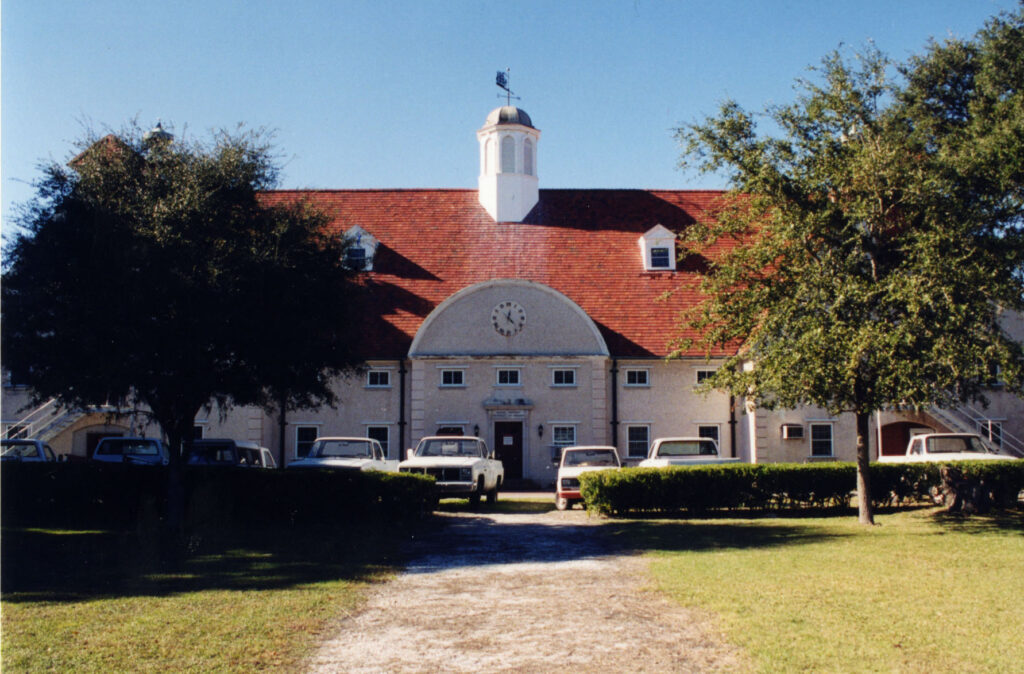The University of Georgia Marine Institute, located on the southern end of Sapelo Island, was established in 1953 through the generosity of Richard J. Reynolds Jr. It was founded primarily as a research institute and has conducted research centered on salt marsh, watershed, and nearshore ecosystems since its inception. The goals of the research are to understand the biological, chemical, geological, and physical processes that control salt marsh systems.

Photograph by Darby Carl Sanders, New Georgia Encyclopedia
Sapelo Island is a barrier island located approximately five miles off the Georgia mainland in McIntosh County. Barrier islands are found along the length of the Georgia coast and act as protection against erosion and storms. Between the barrier islands and the mainland lie estuaries, areas where freshwater mixes with seawater. These estuaries have extensive salt marshes dominated by the smooth cordgrass, Spartina alterniflora, and the black needle rush, Juncus roemerianus. The coastal marshes of Georgia comprise almost 400,000 acres and represent nearly a third of the salt marshes on the east coast of the United States. These highly productive marshes provide a home for oysters, clams, and other organisms that spend all of their lives in the estuary and for young shrimp, crabs, and fishes that use the estuary as a nursery ground.
The Marine Institute provides a modern environmental laboratory with access to outdoor field sites that allow scientists to study these valuable natural resources. The facilities include a main laboratory building of approximately 13,685 square feet, which houses offices and laboratories for resident and visiting scientists. There are two modern instrument rooms with state-of-the-art scientific instruments, two flowing-seawater laboratories, and a scientific library with more than 6,000 volumes and sixty-three current journals and periodicals. There are twenty-seven volumes of collected reprints from studies conducted using the Marine Institute, with contributions numbering almost 900. To conduct studies in the estuaries, the Marine Institute operates the research vessel R/V Spartina, a forty-four-foot fiberglass boat, and maintains numerous smaller boats for use in the tidal rivers and creeks.
In addition to five resident faculty, visiting scientists are encouraged to live and study on the island for periods of one month to six months. To date, the Visiting Scientist Program has attracted renowned scientists from thirteen countries and across the United States. As a part of the University of Georgia’s School of Marine Programs, the Marine Institute does not offer formal courses, but its facilities are available for use by graduate students from any accredited college or university who wish to pursue their degree-requirement research in estuarine and marine ecological studies. The Student Intern Program allows first-year graduate students and advanced undergraduates to learn about the process of basic environmental research through actual hands-on experience under the guidance of Marine Institute faculty.






